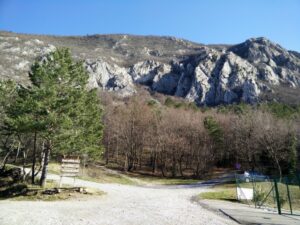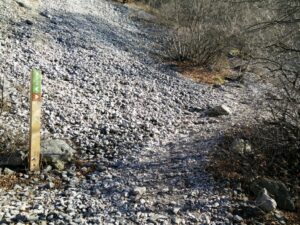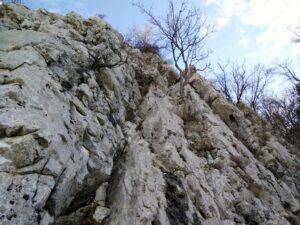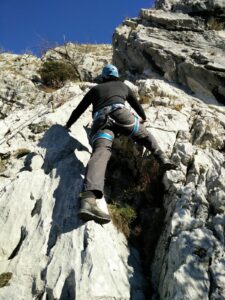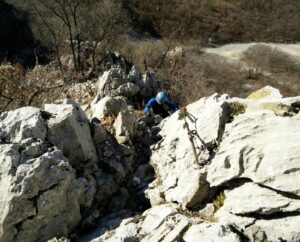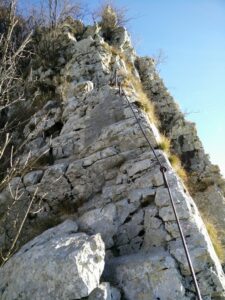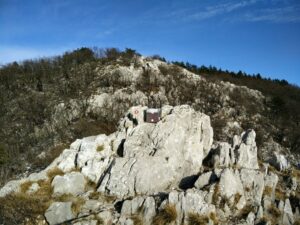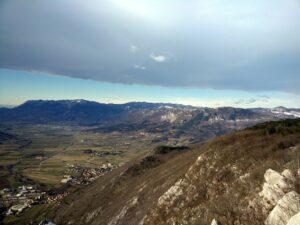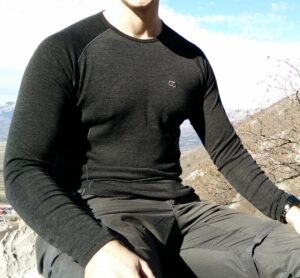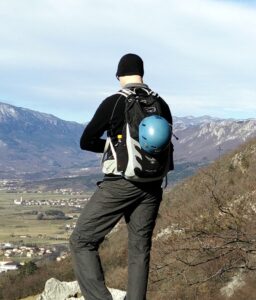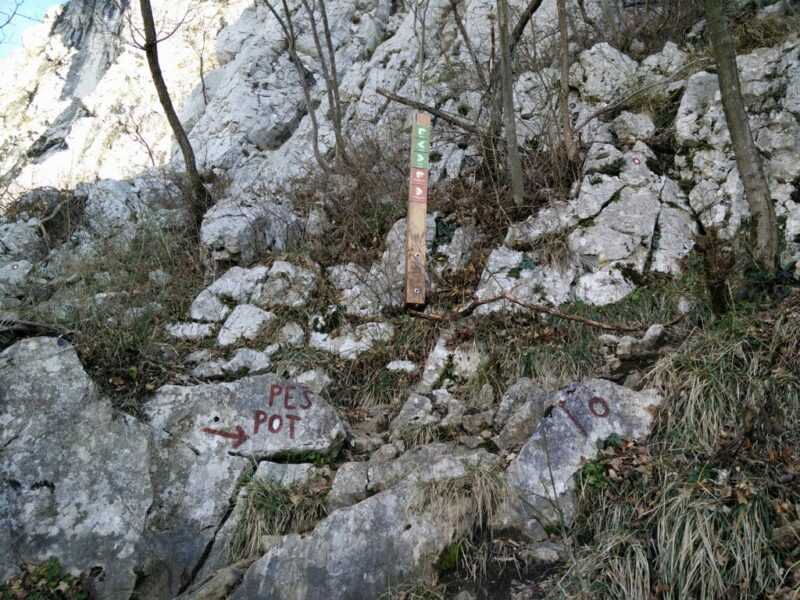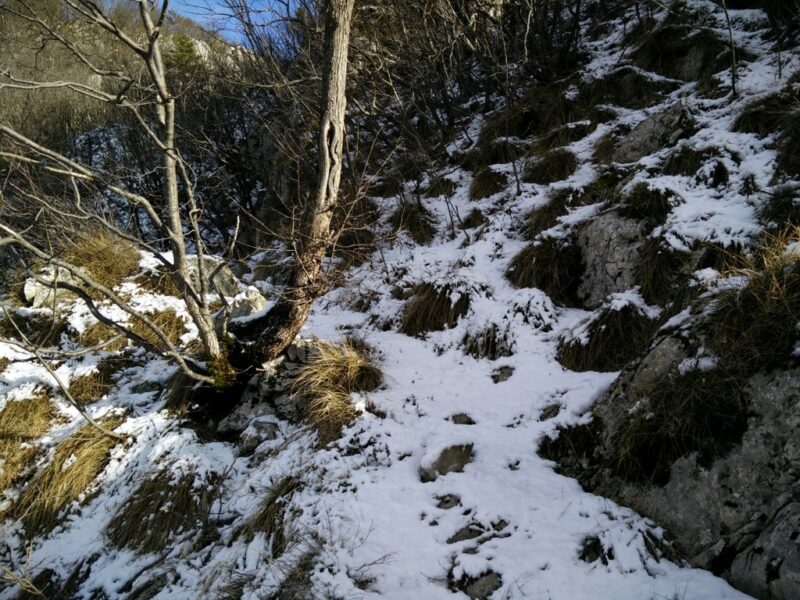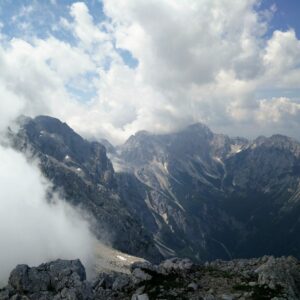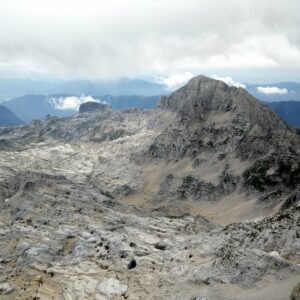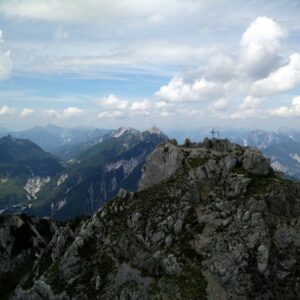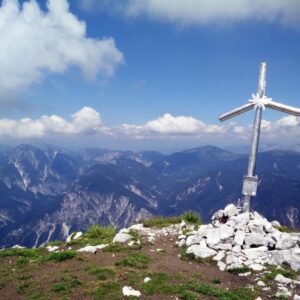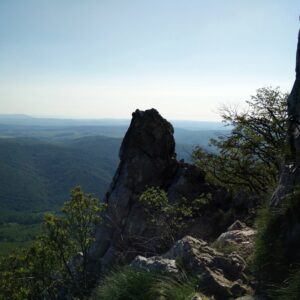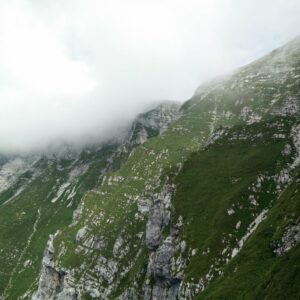
Gradiska Tura Trail – Going Via Ferrata
About Gradiska Tura Trail
As a warm-up for my “Hiking the Alps” tour, I decided to do the Gradiska Tura route, which is an interesting and dynamic via ferrata trail in western Slovenia. Slovenia is a small Central European country which is bordered by Italy, Austria, Croatia and Hungary, and it is here that you will find the easternmost part of the Alps as well as many other exciting landscapes for hiking, climbing and mountaineering. Gradiska Tura is a great example of this and as it is located in the Primorska region which is known for its mild temperatures in winter season, it was a perfect trail to conquer before hitting the Alps – and after having hiked in the chillier Iceland and Denmark.
The trail is technically challenging but if you are not afraid of heights and you have the appropriate equipment such as a climbing harness, via ferrata set and helmet, I believe that you won’t have any troubles on it. The end point of this trail is the top of a small mountain from where you can get a great view on the surrounding Vipava valley with its rolling hills. If you decide that the “via ferrata” part of the trail looks a little too wild/vertical for you, you can still reach the top as there is an additional (less technically challenging) path leading there – I used this path for the way down (check the GPS trail below).
Gradiska Tura Trail Details
Physical Difficulty
Medium
Technical Difficulty
Hard
Duration
3 h
Distance
2.5 km
(1.55 mi.)
Ascent
506 m
(1660 ft.)
Descent
506 m
(1660 ft.)
Highest Point
762 m
(2500 ft.)
Lowest Point
259 m
(850 ft.)
Date of the Hike Date when we did this hike ?
February 2016
Weather On the day when we did this hike ?
Sunny
Temperature On the day when we did this hike ?
13° C
(55° F)
Wind On the day when we did this hike ?
6 km/h
Warning!
This trail is technically very difficult and requires alpine equipment and proven experience with alpine mountaineering.
Gradiska Tura GPS Route and Trail Description
*Click on the chart to see the location on the map
GPX route helps you with the navigation on a hike. It can be used with a smartphone, handheld GPS device or a GPS watch.About GPX Route
Reaching the starting point
The trail starts in a small village called Gradisce near the Vipava village which is located 20km from the Italian border. Only Vipava is accessible by public transport, but it should take you no more than 30 minutes to reach Gradisce by foot from here; see the GPS route attached below to get the precise location of the starting point. Next to the starting point you will find the Tura campsite, where you can sleep over and enjoy their recreational facilities such as climbing walls and tennis courts. To get time schedules for buses (from everywhere within Slovenia) you should use the Ljubljana Bus Station website and write Vipava as the destination.
If you are arriving by car and driving along the E61 highway which connects Slovenia to Austria and Italy, you need to get off it at the Razdrto crossing and then drive on H4 expressway towards Nova Gorica for 18 kilometers. Then get off the expressway at exit Vipava and turn left in the first crossroad. After driving for approximately 600 meters you will see a sign for Gradisce and the Tura campsite on your right. You should turn right here and then continue upwards on the narrow road that leads to the Tura campsite. After driving for approximately 1.5 kilometers you will reach the campsite. You can park on the big parking place next to the tennis courts and climbing wall.
Trail
This trail is technically challenging and thus suitable for those who have the appropriate equipment and are not new to hiking. Starting from the parking place at the Tura campsite, begin walking towards east and soon you’ll come to the directions sign where three different paths start. You should continue on the path to the right and follow the signs for Gradiska Tura. The path will eventually turn towards south-east and after hiking for approximately 270 meters you will arrive to a crossroad. Here you should take the trail that goes left towards the scree (steep slope with pebbles) and after crossing the scree on the designated path, continue right (there is also a direction sign for Gradiska Tura here). From here on the trail gets steeper, rockier and more demanding. You will quickly start gaining altitude and at some places you will have to use your hands in order to ascend safely. The path is marked with the red and white circles, so you shouldn’t have too many problems with navigation. However, there are many side paths that lead to other climbing. I would recommend you to always look for the red and white circles if you are not sure where to go. Alternatively you can download the above attached GPS route and use it with a GPS device as well as with most Smartphones. After hiking for 600 meters altogether and ascending for 120 meters you will reach the point where the path splits into two. The left path leads to the via ferrata trail while the right path (technically less challenging and marked as “pes pot”) first runs to the south and then goes parallel to the via ferrata trail. Later both paths merge and lead to the top of a small mountain.
If you want some via ferrata action, you should stick to the left path. After walking for 50 meters you will arrive to a wooden bench and next to it a steep rocky slope where you will see the steel cable that runs almost vertically along the route. This is a great place to put your climbing harness, via ferrata set and helmet on. In general I would recommend you to use all three items, but if you for some reason don’t want to use safety equipment then at least put a helmet on – falling rocks are common in this area. From here on you will be ascending almost vertically and after approximately 20 minutes you will arrive to a wooden terrace (placed on the steep slope, in the middle of nowhere) which offers a great view on the Vipava valley. From the terrace and onwards, you should stick to the right and soon you will reach a very exposed ridge which you have to climb – there is a steel cable running along the ridge. When you are done with the ridge there are only couple minutes of climbing left before reaching the top of the via ferrata stretch. Here the via ferrata trail and the technically less challenging path merge again.
From here on follow the ascending path for 400 meters (vertically 200 meters) and soon you will reach the top of the small mountain. At the time when I was doing the hike (February) there was still some snow at 600 meters above the sea level and onwards. However, the snow wasn’t frozen and therefore I was able to safely ascend the mountain without any winter equipment.
Getting back to the starting point
For the way back I used the same path except that I skipped the via ferrata trail by sticking to the less challenging path.
Equipment
As the weather forecast showed relatively high temperatures (13 C) and almost no wind (6km/h), I didn’t carry much clothing with me. I was wearing a WoolPro Agena long sleeve t-shirt, Woolx Blizzard Top, a pair of lightweight hiking pants, Salewa hiking boots, socks made of Merino wool and a Woolx hat. In my Osprey Talon 22 backpack I was carrying a Windstopper jacket, via ferrata set, climbing harness, helmet and some other accessories as well as water and food. If you are doing this hike in winter you should check the weather and snow conditions before going; if the trail is covered with snow I would recommend you to postpone the trip. Sometimes it can also get very windy in this area and thus additional windproof clothing is required. In summer I would recommend you to go on this hike early in the morning as it gets very hot during the day there. Also have enough water with you to stay hydrated.
Equipment under scrutiny
WoolPro Agena Long Sleeve T-shirt
The WoolPro Agena long sleeve t-shirt is an incredible piece of clothing. It is made of 100% ultrafine Merino wool which is comfortable and pleasant to the touch. Due to the superb material the Agena also offers great moisture-wicking and odor-control properties. During the hike I didn’t notice any itching, chaffing or other discomforts. The Agena kept me warm and comfortable throughout the hike. The only remark that I have is that the seams are “felt” a little more than in other t-shirts which I usually use for hiking, but not in a distracting way. You can read the full WoolPro Agena review here.
Osprey Talon 22 – Hiking Backpack
The Osprey Talon 22 is an incredibly light backpack (it weighs merely 750 g) which is perfect for via ferrata trails as well as for easier one day hiking trips. I was amazed over the stability, comfort and functionality of the backpack on this trip. The backpack features a ventilated backpanel, external sleeve for hydration system, helmet and poles attachment system, hip belt and chest strap. I was especially satisfied with the helmet attachment system as it allowed me to easily and securely attach the helmet on the backpack thus saving the space inside. You can read the full review of the Osprey daypack here.
- Note: Osprey has since released an updated version of the Talon 22 and the link points to the new version.
Conclusion and photo gallery
The Gradiska Tura trail is best for those who already have some hiking skills and want to get an adrenaline rush while climbing a relatively difficult via ferrata trail on their way to the top of a small mountain. On the top you will be rewarded with a great view on the Vipava valley and surroundings. Even though I believe that many of you can climb the via ferrata stretch without any safety equipment I would still advise you to wear the recommended gear.
If you have any questions about this hike, please drop me a line in the comments below.
